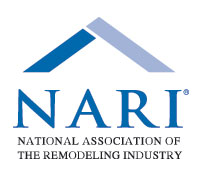Five Things I Wish the Remodeling Industry Would Change In 2016, But won’t
 The majority of remodeling contractors who participate in the remodeling industry are holding the industry back from becoming much more professional and successful. Remodelers forever complain about what they perceive the government and even consumers do to them to make running a business and earning a profit difficult. However in many ways remodelers are their own worse enemies, creating problems for themselves and the industry by both their actions as well as their lack of action. Below are just five things I wish all remodelers and the industry would change, but won’t.
The majority of remodeling contractors who participate in the remodeling industry are holding the industry back from becoming much more professional and successful. Remodelers forever complain about what they perceive the government and even consumers do to them to make running a business and earning a profit difficult. However in many ways remodelers are their own worse enemies, creating problems for themselves and the industry by both their actions as well as their lack of action. Below are just five things I wish all remodelers and the industry would change, but won’t.
Before you check out my list keep this in mind. If you’re a remodeler and you eliminate and or address most of these things in your business you will stand out as different. You will also be more successful, be at much less risk and can also make much more money.
#1: Stop calling them estimates, they are not estimates
Home owners ask for estimates. In most cases they don’t want a guess, they want a fixed price. Next time a consumer asks for an estimate give them one right away; “That will cost somewhere between an arm and a leg depending on your final product selections”. Then help them discover what it will really take to help them assemble a fixed price for a fixed scope of work that meets their needs. Then let them know how your professional services can help them do so; and what you charge for those services. One way to explain it is your estimates are free, you charge to help develop solutions… (Check out this Design/Build Agreement)
#2: Calling Employees Lead Carpenters when they are not
Although most remodelers really don’t know what a true lead carpenter is many claim they have several on staff. If you don’t believe me read this job description first, then ask a few to define the difference between a carpenter and a lead carpenter. Giving the title to an employee who is not a true lead carpenter does a disservice to the employee and misleads consumers. It’s like passing off roof cement as a flashing. It’s just not right to do so if you are really a roofer. Becoming a Lead Carpenter is an accomplishment, let’s reserve the title for those who have earned it.
#3: Claiming to be Design/Builders when they are not
Like Yoda said; “Do or do not, there is no try”. You either are a Design/Builder or you are not. If you allow others to bid on and or build from your plans you are not a Design/Builder; that is something else. Decide what you are or will be. There is a big difference between Design/Build and design-bid. (Design/Build definition) Remember, in a bid situation it’s often the biggest loser who wins! If you hate bidding become a real Design/Builder. That’s what motivated me to become a Design/Builder when I had my business.
#4: Guessing at what markup to use
Surveys of the industry as well as my own experience show that at least 85% of remodeling contractors have no idea how to figure out what markup to use. Our industry even has a name for this; “The Wild Ass Guess”. Sadly, many remodelers are even under the false impression that markup and margin mean the same thing! What does it say about an industry when so many of its business owners are ignorant about what they need to charge to be successful and profitable? (The Five Biggest Financial Related Mistakes Contractors Make)
#5: Tolerating illegally operating business
 There are probably more than one million remodeling businesses in the United States if you include those without payroll. Sadly, I bet fewer than 20% operate completely legal. That’s probably why so many remodelers find some way to rationalize why they tolerate other illegal businesses; “People who live in glass houses shouldn’t throw stones”. Here is just a partial checklist you can use to self-assess: RRP, OSHA, permits, using 1099 workers, taking cash, proper licensing… Need I go on? (10 Steps To Building A Successful Construction Company)
There are probably more than one million remodeling businesses in the United States if you include those without payroll. Sadly, I bet fewer than 20% operate completely legal. That’s probably why so many remodelers find some way to rationalize why they tolerate other illegal businesses; “People who live in glass houses shouldn’t throw stones”. Here is just a partial checklist you can use to self-assess: RRP, OSHA, permits, using 1099 workers, taking cash, proper licensing… Need I go on? (10 Steps To Building A Successful Construction Company)
What about you? What would you like to see change in the remodeling industry? Please offer your perspectives by posting a comment, or two.





 LBM Dealers and the distributors that supply Gen Y will need to make many changes to their business models and tactics. In order to successfully complete and support those changes they will need to upgrade both their staff and their technology. Here are a few quotes from Gen Y contractors that should help motivate both to get going before it’s already too late:
LBM Dealers and the distributors that supply Gen Y will need to make many changes to their business models and tactics. In order to successfully complete and support those changes they will need to upgrade both their staff and their technology. Here are a few quotes from Gen Y contractors that should help motivate both to get going before it’s already too late:
 One thing that remained fairly constant during this evolution was who the contractors were and how they did business. For decades the majority of contractors operated their businesses as technicians. They thought of themselves as contractors, not construction business owners. The joy of building things and advancing their trade skills where the driving factors that made them who they were. As a result of this mentality, and the fact that there was almost always way more work available than contractors to do it, they could command profitable prices. And unfortunately, at the same time, they could also get by with poor business practices in the areas of sales, marketing and accounting.
One thing that remained fairly constant during this evolution was who the contractors were and how they did business. For decades the majority of contractors operated their businesses as technicians. They thought of themselves as contractors, not construction business owners. The joy of building things and advancing their trade skills where the driving factors that made them who they were. As a result of this mentality, and the fact that there was almost always way more work available than contractors to do it, they could command profitable prices. And unfortunately, at the same time, they could also get by with poor business practices in the areas of sales, marketing and accounting. 

 Fast delivery of that one joist hanger you’re missing so you can put the floor sheathing down and get the wall framing going
Fast delivery of that one joist hanger you’re missing so you can put the floor sheathing down and get the wall framing going I first came across this topic in a
I first came across this topic in a 

 As the movie industry races to develop three-dimensional blockbusters, the construction world has left the third dimension in the dust. The newest trend is one step further: four-dimensional planning, which allows a person to not only see the entire view of a building, but see it from every possible angle. This gives contractors the opportunity to see possibilities they didn't before, plan better for construction,
As the movie industry races to develop three-dimensional blockbusters, the construction world has left the third dimension in the dust. The newest trend is one step further: four-dimensional planning, which allows a person to not only see the entire view of a building, but see it from every possible angle. This gives contractors the opportunity to see possibilities they didn't before, plan better for construction, 


 How about before any real-estate is sold why not require a comprehensive inspection and inventory of the home be done? By doing so we could document the condition and configuration of that property. The next time that property is sold, the same inspection should happen again; plus any changes in status should be identified and listed. Then the property owner should have to provide proof that any work done that required a building permit and final inspection sign-off was actually obtained. If it’s a pre 1978 home all required RRP paperwork must be provided as well. If any of this can’t be provided by the seller, the property can’t be sold. And, if such information cannot be provided the entire property must be brought up to current building code standards and be dust wipe tested for lead paint contamination before it can be sold.
How about before any real-estate is sold why not require a comprehensive inspection and inventory of the home be done? By doing so we could document the condition and configuration of that property. The next time that property is sold, the same inspection should happen again; plus any changes in status should be identified and listed. Then the property owner should have to provide proof that any work done that required a building permit and final inspection sign-off was actually obtained. If it’s a pre 1978 home all required RRP paperwork must be provided as well. If any of this can’t be provided by the seller, the property can’t be sold. And, if such information cannot be provided the entire property must be brought up to current building code standards and be dust wipe tested for lead paint contamination before it can be sold.


 U.S. Rep. Tim Murphy (R-Pa.) introduced H.R. 2093, the Lead Exposure Reduction Amendments Act of 2013. Similar to the Senate bill introduced in March, this bill would:
U.S. Rep. Tim Murphy (R-Pa.) introduced H.R. 2093, the Lead Exposure Reduction Amendments Act of 2013. Similar to the Senate bill introduced in March, this bill would:

 Most of my experience with contractors has been from a consumer perspective. Those experiences have run the gamut of “outstanding” when jobs were completed in the blink of any eye and a minimum of dust to “outrage” when an HVAC contractor told me to go “F” myself when I asked him to honor his one year warranty.
Most of my experience with contractors has been from a consumer perspective. Those experiences have run the gamut of “outstanding” when jobs were completed in the blink of any eye and a minimum of dust to “outrage” when an HVAC contractor told me to go “F” myself when I asked him to honor his one year warranty. During this research, I read a few blog entries on this site regarding Chris Dietz’s lawsuit filed against a customer who allegedly posted libelous comments about his work on review websites. The posts from fellow contractors were generally positive, but I noticed that supportive comments were conditional. For instance, “…providing he’s telling the truth…” and “…as long as he’s honest…”
During this research, I read a few blog entries on this site regarding Chris Dietz’s lawsuit filed against a customer who allegedly posted libelous comments about his work on review websites. The posts from fellow contractors were generally positive, but I noticed that supportive comments were conditional. For instance, “…providing he’s telling the truth…” and “…as long as he’s honest…” To be honest, I’m terrified of working for that client that has nothing better to do than bad mouth my new found profession. I hope I never meet them.
To be honest, I’m terrified of working for that client that has nothing better to do than bad mouth my new found profession. I hope I never meet them.
 Although some feel such tactics might be self-serving, I disagree. It is my opinion that Walt was a truly caring person who loved and gave his best to the industry, always willing to help people. I think of him as a man who did and gave great things to the industry and the people he loved, and he found a way to be well paid while doing so. By being well paid, he could afford to keep doing what he did and, perhaps more important, he kept getting better at it! A good example for all of us to consider for our own businesses.
Although some feel such tactics might be self-serving, I disagree. It is my opinion that Walt was a truly caring person who loved and gave his best to the industry, always willing to help people. I think of him as a man who did and gave great things to the industry and the people he loved, and he found a way to be well paid while doing so. By being well paid, he could afford to keep doing what he did and, perhaps more important, he kept getting better at it! A good example for all of us to consider for our own businesses.






